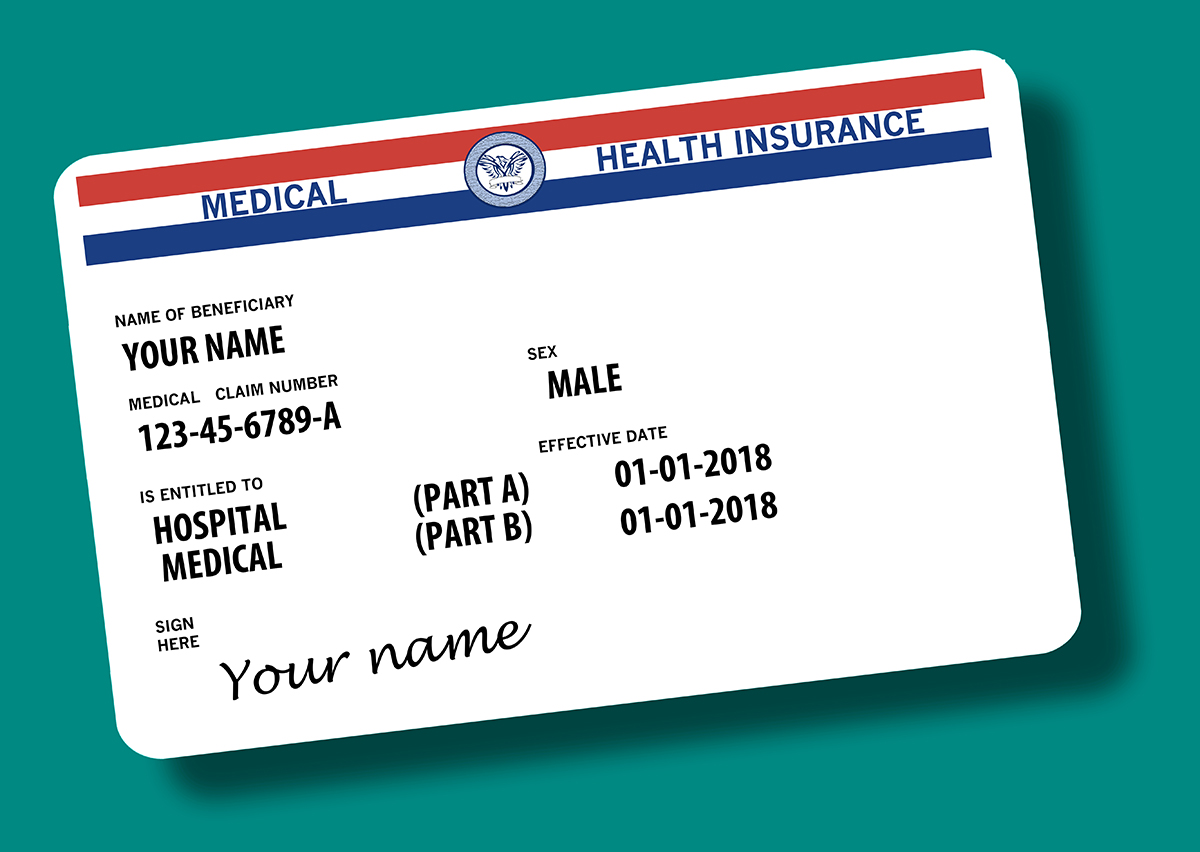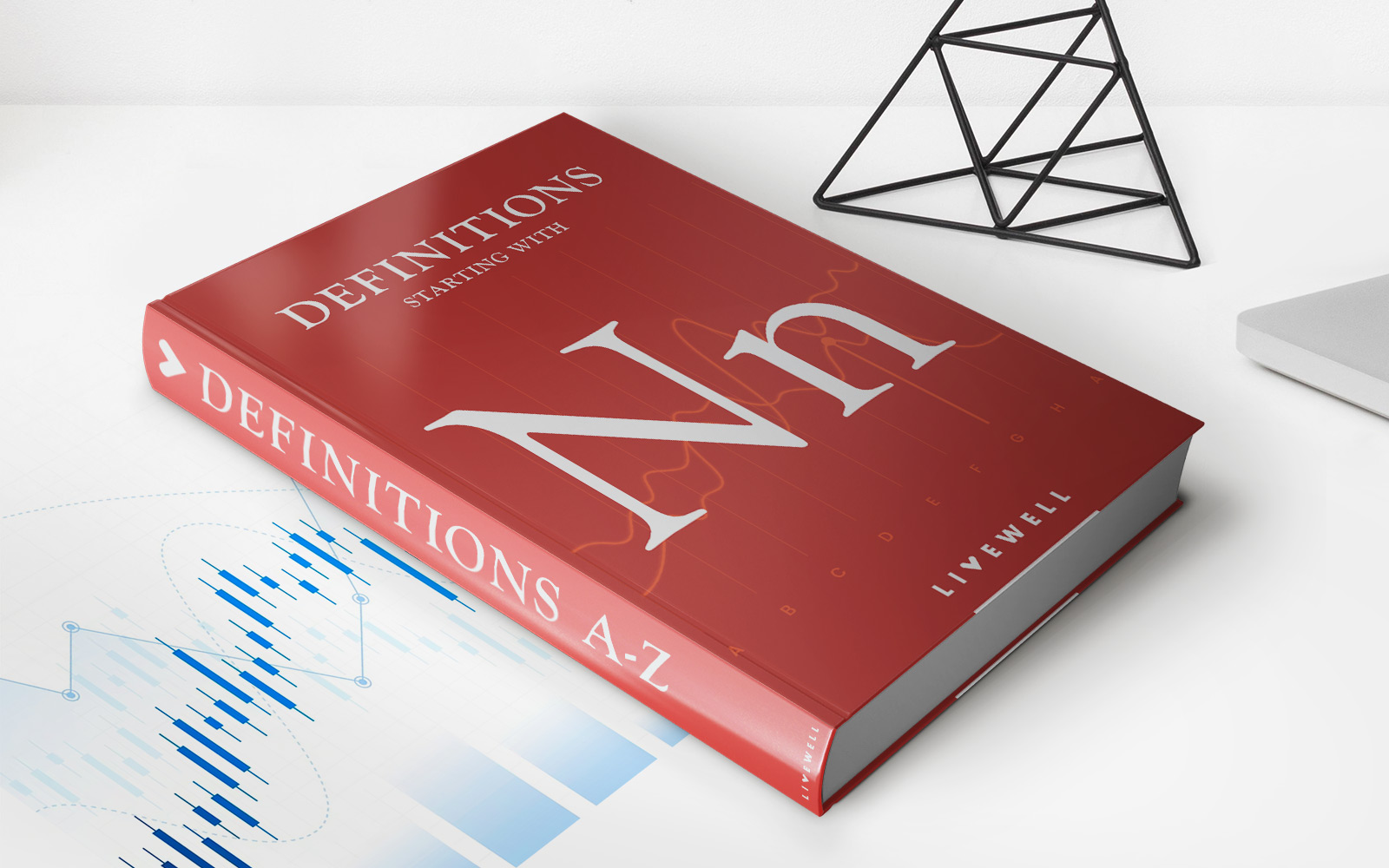Home>Finance>How Is The Life And Health Insurance Guaranty Association Funded?


Finance
How Is The Life And Health Insurance Guaranty Association Funded?
Published: November 8, 2023
Discover the funding process of the Life and Health Insurance Guaranty Association. Explore the various financial aspects of this association and how it operates in the realm of finance.
(Many of the links in this article redirect to a specific reviewed product. Your purchase of these products through affiliate links helps to generate commission for LiveWell, at no extra cost. Learn more)
Table of Contents
Introduction
Welcome to the world of insurance! Life and health insurance are essential financial tools that provide individuals and families with peace of mind in the event of unforeseen circumstances. However, no matter how well-regulated and stable the insurance industry might be, there is always a possibility that an insurance company could become insolvent and fail to fulfill its obligations to policyholders.
This is where the life and health insurance guaranty associations step in. These associations are created by state laws to protect policyholders in the event of insurer insolvency. They provide a safety net by guaranteeing the payment of claims and the continuation of coverage to affected policyholders.
In this article, we will explore the role of these guaranty associations, how they are funded, and the challenges they face in fulfilling their crucial mission.
So, let’s dive in and learn more about the fascinating world of life and health insurance guaranty associations!
State Guaranty Associations
Life and health insurance guaranty associations are state-based entities that provide protection to policyholders when an insurance company becomes insolvent. Each state has its own guaranty association, governed by laws specific to that state. These associations operate independently but follow a similar framework and principles.
The primary purpose of these associations is to ensure that policyholders receive the benefits they are entitled to under their insurance policies, even if their insurance company fails. Guaranty associations step in to pay the claims and continue the coverage, providing a safety net for policyholders and preserving the stability and trust within the insurance industry.
State guaranty associations are typically funded through assessments on member insurance companies. These assessments are determined based on the insurance company’s premium volume and are calculated to cover the obligations of the guaranty association, including paying claims and administrative expenses.
It is important to note that guaranty association coverage is not unlimited. Each state sets limits on the amount of coverage provided to policyholders in the event of insurer insolvency. These coverage limits may vary from state to state and across different types of insurance policies.
State guaranty associations also play a crucial role in regulatory oversight. They collaborate with insurance regulators to monitor the financial strength and stability of insurance companies, intervening if necessary to address potential insolvency risks and protect policyholders’ interests.
Overall, state guaranty associations are essential in maintaining confidence in the insurance industry and ensuring that policyholders are not left stranded in the event of insurer insolvency. Their presence and financial backing provide security and peace of mind for individuals and families who rely on life and health insurance coverage.
Purpose and Role of Guaranty Associations
The purpose of life and health insurance guaranty associations is to protect policyholders when an insurance company becomes insolvent. When an insurance company fails, policyholders are at risk of losing their coverage and not receiving the benefits they paid for. Guaranty associations step in to fill this gap and ensure that policyholders are not left without protection.
One of the key roles of guaranty associations is to pay the claims of policyholders whose insurance company has become insolvent. This means that if you have a valid claim and your insurance company goes under, the guaranty association will step in to fulfill that claim, up to the coverage limits set by state law.
In addition to paying claims, guaranty associations also aim to continue coverage for policyholders. This means that even if your insurance company fails, you will still have insurance protection through the guaranty association. They work to transfer your policy to a new insurance company, ensuring that you can continue to receive coverage and benefits without interruption.
Another important role of guaranty associations is to promote stability and confidence in the insurance industry. By providing a safety net for policyholders, they enhance trust and encourage individuals and businesses to continue purchasing insurance products. This helps maintain a healthy market and supports the overall stability of the industry.
Guaranty associations also play a vital role in consumer education and advocacy. They provide information and resources to policyholders to help them understand their rights and navigate the claims process. They advocate for policyholders’ interests and work to ensure fair treatment in the event of insurer insolvency.
Overall, the purpose and role of guaranty associations revolve around protecting policyholders and preserving the integrity of the insurance industry. They provide financial security, continuity of coverage, and peace of mind for individuals and families who rely on life and health insurance for their well-being and financial security.
Funding Mechanism for Guaranty Associations
Life and health insurance guaranty associations are funded through a mechanism that involves assessments on member insurance companies. This funding scheme ensures that guaranty associations have the necessary resources to fulfill their obligations to policyholders in the event of insurer insolvency.
When an insurance company becomes insolvent, it is unable to pay its claims and fulfill its financial obligations. In such cases, guaranty associations step in to pay the outstanding claims and provide continuity of coverage for policyholders. To finance these responsibilities, guaranty associations rely on assessments from their member insurance companies.
The assessments imposed on insurance companies are typically based on their premium volume. The higher the premium volume of an insurance company, the larger its assessment will be. This method ensures that larger insurance companies, which handle higher volumes of policies and potentially carry more risk, contribute proportionally more to the funding of the guaranty association.
The assessments collected from member insurance companies are used to establish and maintain the guaranty association’s fund. This fund serves as the financial pool from which claims are paid and administrative expenses are covered. The fund’s primary purpose is to protect policyholders and ensure that they receive the benefits they are entitled to in the event of insurer insolvency.
It is worth noting that the funding mechanism for guaranty associations varies by state. Each state has its own laws and regulations governing the assessment process and the allocation of funds. This means that the assessment rates and amounts may differ from state to state.
The funding mechanism also takes into account the coverage limits imposed by state law. Guaranty associations are not required to provide unlimited coverage for policyholders. Instead, state laws specify the maximum amount that can be paid out by the association. These coverage limits vary depending on the type of insurance and the state in which the policy was issued.
Overall, the funding mechanism for guaranty associations ensures that there are resources available to protect policyholders when insurance companies fail. By imposing assessments on member insurance companies, guaranty associations can fulfill their crucial role of paying claims and providing continuity of coverage, safeguarding the interests of policyholders within the insurance industry.
Assessments on Member Insurers
One of the primary sources of funding for life and health insurance guaranty associations is the assessments collected from their member insurance companies. These assessments are essential in ensuring that the guaranty associations have the necessary financial resources to protect policyholders in the event of insurer insolvency.
The assessments imposed on member insurers are typically based on a percentage of their premium volume. This means that insurers with higher premium volumes will contribute more towards the funding of the guaranty association. The rationale behind this approach is that companies that handle a larger number of policies and assume more risk should bear a greater financial responsibility for supporting the guaranty association’s activities.
Assessment rates can vary from state to state and across different types of insurance. The rates are typically determined by each state’s insurance department and may be adjusted periodically based on the needs of the guaranty association and the financial conditions of member insurers.
It is important to note that assessments on member insurers are not one-time payments. They are recurring and ongoing, ensuring a steady stream of funding for the guaranty association. Insurance companies are required to pay these assessments regularly, usually on an annual or quarterly basis.
The collected assessments are used to establish and maintain the guaranty association’s fund, which serves as a financial reserve to pay claims and cover administrative expenses. The fund is carefully managed to ensure its availability in the event of insurer insolvency.
In some cases, guaranty associations may also have the authority to impose additional assessments on member insurers if the existing fund is insufficient to meet the obligations of the association. These additional assessments are typically triggered when a member becomes insolvent or when there is a significant increase in claims activity.
Assessments on member insurers play a vital role in ensuring the financial stability and continuity of guaranty associations. By requiring insurers to contribute financially, these associations can fulfill their mission of protecting policyholders and providing support when insurance companies fail.
It is worth noting that the assessment system may differ from state to state, as each state has its own laws and regulations governing the funding and operations of the guaranty association.
Coverage Limits and Claims Process
Life and health insurance guaranty associations provide a safety net for policyholders when their insurance company becomes insolvent. However, it is important to understand that guaranty association coverage is not unlimited. Each state establishes specific coverage limits and guidelines that govern the protection offered to policyholders.
The coverage limits set by state laws define the maximum amount that a guaranty association can pay for an individual policyholder’s claim. These limits can vary depending on the type of insurance policy and the state in which it was issued. Common coverage limits include a maximum dollar amount or a percentage of the policy’s face value.
It is crucial for policyholders to be aware of their coverage limits to manage their expectations and make informed decisions regarding their insurance needs. While the guaranty association aims to provide financial protection, policyholders should be aware that they may not receive the same level of coverage as they had with their original insurer.
If an insurance company becomes insolvent, policyholders must initiate the claims process through the guaranty association. The claims process may involve submitting relevant documents, such as policy information, proof of loss, and any other required forms or supporting documentation.
Once the claim is submitted, the guaranty association will review it to determine its validity and the coverage limits applicable. If the claim meets the association’s criteria, it will be processed, and the policyholder will receive the appropriate benefits within the coverage limits set by state law.
It’s important to note that the claims process with the guaranty association may differ from the process with the original insurance company. Policyholders should follow the guidelines and instructions provided by the association to ensure a smooth and efficient claims resolution.
In the event that the amount of the claim exceeds the coverage limits set by the state, the guaranty association may not be able to fully cover the policyholder’s losses. Policyholders should be prepared for this possibility and explore any additional options available to them, such as seeking legal counsel or pursuing claims against other parties involved in the insolvency proceedings.
While the coverage limits may be a constraint, guaranty associations strive to provide the best possible support and assistance to policyholders in difficult circumstances. Policyholders should consult their state’s guaranty association website or contact their insurance department for more information on coverage limits and the claims process specific to their situation.
Other Sources of Funding
In addition to assessments on member insurers, life and health insurance guaranty associations may have access to other sources of funding to support their operations and meet their obligations to policyholders. These additional sources of funding provide an extra layer of financial backing and ensure the stability and effectiveness of guaranty associations.
One such source of funding is the recovery of assets from the insolvent insurer. When an insurance company becomes insolvent, guaranty associations may have the opportunity to recover some of the assets from the failed insurer’s estate. These recovered assets can be used to supplement the association’s fund and provide additional resources to pay claims and cover administrative expenses.
Additionally, guaranty associations may receive assistance from other insurance industry participants. Various entities within the insurance sector, such as reinsurers and related financial institutions, may provide financial support to guaranty associations through voluntary contributions. These contributions can enhance the financial stability of the associations and ensure their ability to meet the needs of policyholders.
State governments may also provide funding or support to guaranty associations. This can be in the form of grants or subsidies to help the association fulfill its mission of protecting policyholders. State governments recognize the importance of maintaining a robust insurance market and may allocate resources to ensure the smooth functioning of the guaranty associations within their jurisdiction.
It is important to note that the availability and extent of these other sources of funding may vary from state to state. Each state has its own laws and regulations governing the operations of guaranty associations and their access to additional funding. Policyholders should consult their state’s guaranty association or insurance department for more information on the specific funding sources available in their jurisdiction.
The utilization of these additional funding sources reflects the collaborative efforts within the insurance industry and the commitment to safeguarding the interests of policyholders. By diversifying their sources of funding, guaranty associations enhance their financial stability, improve their ability to fulfill their obligations to policyholders, and maintain confidence in the insurance market as a whole.
Challenges and Controversies
While life and health insurance guaranty associations play a vital role in protecting policyholders, they are not without their challenges and controversies. These issues can arise due to the complex nature of insurer insolvencies and the inherent limitations of guaranty association coverage.
One significant challenge for guaranty associations is the potential for inadequate funding. Insurer insolvencies can impose a significant financial burden on guaranty associations, especially if multiple large-scale failures occur within a short period. In such cases, the association’s fund may not be sufficient to cover all claims, potentially leading to a strain on resources and the need for additional assessments on member insurers.
Another challenge is the variation in coverage limits across different states. The disparities in coverage limits can create discrepancies in the level of protection available to policyholders, depending on their location. This inconsistency can lead to confusion and dissatisfaction among policyholders who may expect uniform coverage under the guaranty association system.
Controversies can also arise regarding the handling of claims and the determination of coverage by guaranty associations. Policyholders may dispute the association’s decision on the validity or amount of their claims, leading to potential legal disputes and delays in claim resolution. This can be frustrating for policyholders who are already dealing with the stress and financial impacts of the insurer’s insolvency.
Furthermore, the reliance of guaranty associations on assessments from member insurers can be a point of contention. Some insurers may argue that the assessment rates are unfair or overly burdensome, particularly if their premium volume is significantly higher compared to their competitors. This can lead to debates and negotiations between insurers and guaranty associations regarding assessment calculations and rates.
There is ongoing debate regarding the role and limitations of guaranty associations in protecting policyholders. Some argue that the coverage provided by guaranty associations may not be sufficient to fully compensate policyholders for their losses in the event of insurer insolvency. This has prompted discussions about potential reforms and increased coverage requirements to better safeguard policyholders’ interests.
In summary, the challenges and controversies faced by guaranty associations highlight the complexities and limitations of protecting policyholders in the event of insurer insolvency. While their role is vital, there is always room for improvement and adaptation to address the evolving needs and expectations of policyholders and the insurance industry as a whole.
Conclusion
Life and health insurance guaranty associations serve as a vital safety net for policyholders when an insurance company becomes insolvent. These state-based entities play a crucial role in protecting policyholders’ interests, paying claims, and providing continuity of coverage during challenging times.
The funding of guaranty associations through assessments on member insurers ensures that there are financial resources available to fulfill their obligations. This funding mechanism, coupled with other sources such as asset recoveries and voluntary contributions, enhances the stability of guaranty associations and their ability to support policyholders.
While guaranty associations provide significant support, it is important to understand the coverage limits set by state laws. Policyholders should be aware of these limits and manage their expectations accordingly. Understanding the claims process and engaging with the association can help ensure a smooth resolution in the event of insurer insolvency.
However, guaranty associations do face challenges and controversies. Adequate funding, variations in coverage limits across states, and disputes regarding claim handling and coverage determination are among these challenges. Ongoing discussions and potential reforms aim to strengthen the protection provided by guaranty associations and address policyholder concerns.
In conclusion, life and health insurance guaranty associations are essential entities that provide significant support to policyholders during insurer insolvency. By paying claims, continuing coverage, and promoting stability within the insurance industry, guaranty associations safeguard the interests of policyholders and ensure the integrity of the insurance market. Policyholders should familiarize themselves with their state’s guaranty association and their rights to make informed decisions and access the support they deserve.














